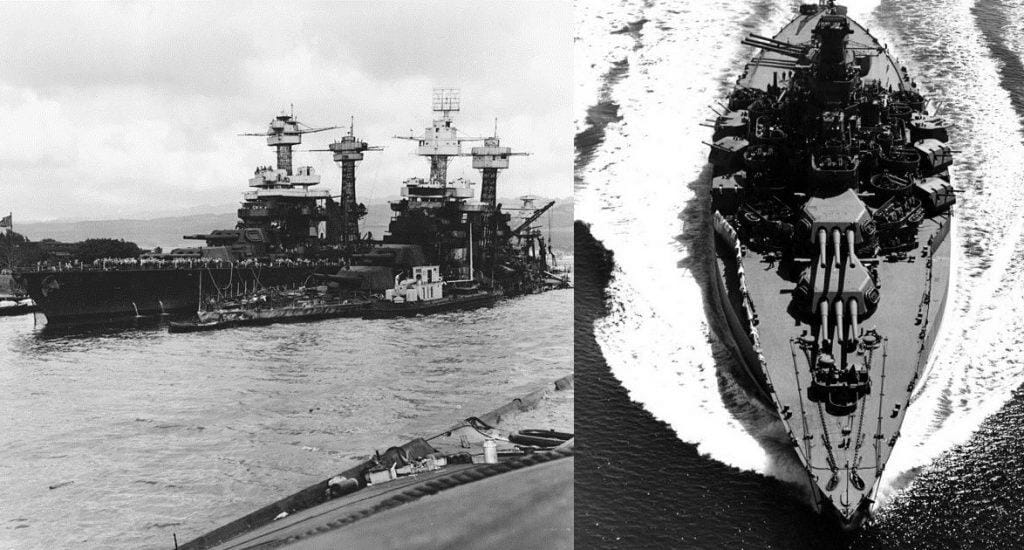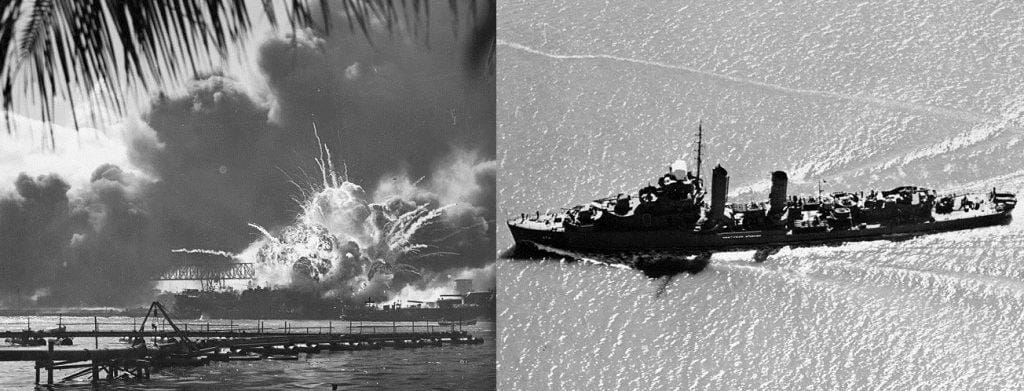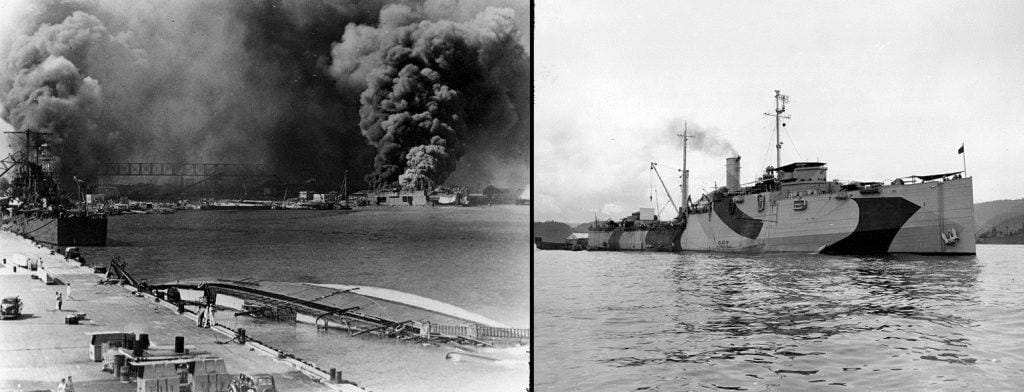Even if you are not interested in the history of the Second World War you have probably heard about the Pearl Harbor attack. It was an attempt by Japanese forces to disable the U.S. Navy with one strong hit that would essentially allow Japan to dominate the Pacific region, jumping from one island to another. It led to the entry of the U.S. in the war and, eventually, it would bring Japan to capitulation by using two nuclear bombs. You might have even seen a movie about the attack on Pearl Harbor, but do you know how many ships came back to service after getting damaged or sunk?
Surprisingly, as much as people know about this strike delivered to the American Navy on 7th of December 1941, there is a common belief that many ships (tens or maybe even up to a hundred) were totally destroyed. However, that is quite far from the truth. While no one can say that the Japanese attack was pointless or didn’t harm U.S. power in the oceans, most of the damaged ships came back to life fairly quickly.
In this article we will take a look at those that did raise from the dead and came back to lead their country to an ultimate victory in the war. Out of 16 ships that were damaged to a point in which they could not remain in service, only 3 were considered to be a total loss. The U.S. Navy suffered a loss of 2403 soldiers, many planes and equipment, but ships just raised themselves from the bottom of the bay and came back to fight.
Battleships
USS West Virginia suffered from seven torpedoes and two bomb hits. It was also badly damaged by the flames of USS Arizona and eventually sunk. 106 people were killed in the USS West Virginia, but it was rescued and repaired – they pumped out the water to make the ship afloat and then dragged it for repairs. USS West Virginia came back to service in July 1944.

USS Tennessee got hit much less. It suffered two bomb strikes, which killed 5 people. It was wedged in place by another sunken ship, but soon it was free, repaired and ready for battle.

USS Nevada, if it was still alive, would have some incredible stories to tell. It was not stationary in Pearl Harbor, so it manoeuvred to avoid some of the hits. However, it still suffered some damaged inflicted by six bombs and one torpedo. Eventually it was beached, but in October of the next year it was back in service.

After the war, Nevada became a target for nuclear bomb testing in the Bikini Atoll. It survived inaccurate explosions. Some time later in 1948 it became a target for other ships, but it survived again. It was just refusing to go down. However, a deadly blow was delivered by an air-born torpedo in an act considered to be coup de grâce.
USS California received two bomb hits and two torpedo impacts and sank to the bottom of the harbour despite continuous efforts of the crew. Three months later it was rescued and sent off for full repairs. The USS California rejoined the war in January 1944.
USS Maryland was standing in a position that sort of hid it from attacks. It suffered only light damage from two bombs and four people died, but it came back to service in February 1942.

Destroyers
USS Downes and USS Cassin were in a drydock when Japanese delivered their strikes. One bomb was enough to set these ships ablaze. Their hulls were destroyed beyond repair, but structural parts were used to rebuild them. The USS Downes was back in service in November 1943 and the USS Cassin came back in February 1944.

USS Shaw got hit by three bombs. Fire eventually detonated ammunition, which made for one of the most iconic photographs of the attack on Pearl Harbor. However, it was quickly repaired – in June 1942 it was back in service.

Cruisers
USS Raleigh got hit by a torpedo and was leaning heavily on one side. However, it stayed afloat, which made for easy repairs – it was back in February 1942.
USS Helena received a torpedo blow, but it was relatively in good shape, even though it could only make 10 knots. Repairs were finished in June 1942.
Other ships
USS Vestal was damaged by two bombs, and flames spreading from Arizona. Its crew was fighting vicious flames for a long time and even grounded the ship intentionally to prevent it from sinking. Vestal’s crew performed most of the needed repairs themselves, which were finished by August 1942.

USS Oglala was a very old ship, originally built to carry passengers, but that was laying mines in the First World War. It continued its service, but in Pearl Harbor attack it started showing its age – its thin hull could not take the shockwave from the torpedo explosion in the USS Helena. The USS Oglala sank and stayed on the bottom of the bay until the summer of 1942. Then it was finally rescued and sent off for repairs, which were completed in February 1944. However, it was not laying mines anymore – now it served as an engine repair ship.

USS Curtis got hit by a bomb and a crashing Japanese fighter. Several fires started, but damage was light enough for this seaplane tender to come back to service by the end of January 1942.
Only three ships were completely lost. However, they were not just forgotten – guns and useful equipment were taken from them and used in other ships. The USA showed that one attack cannot disable its spirit and military supremacy in the oceans of the world.




